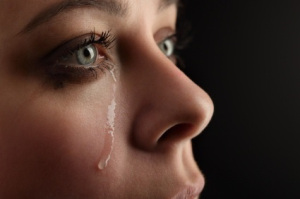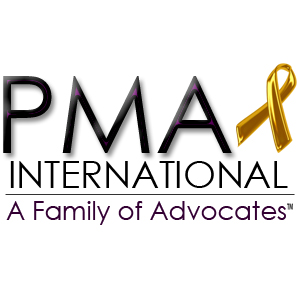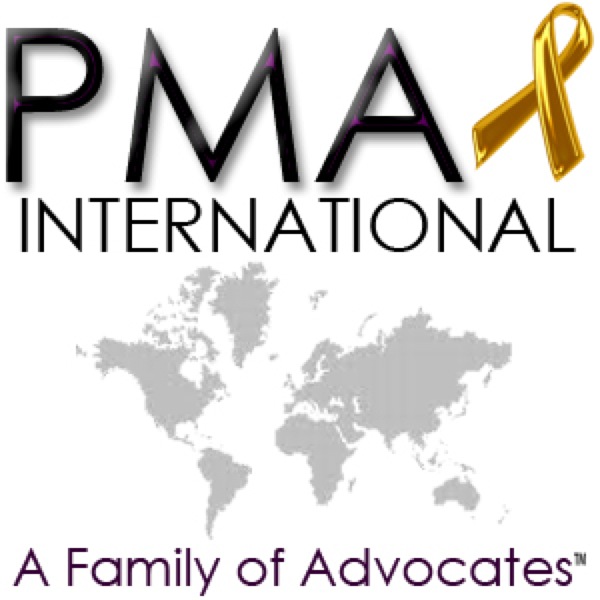Posts Tagged ‘PTSD’
Wounded Healer/ The Series
Disclaimer:
All content provided for PMA International’s Wounded Healer series is for informational purposes only. This content does not represent the PMA International organization as a whole or its members/supporters, state chapter leaders, international leaders, administrators, professional supporters and co-founders. PMA International makes no representations as to the accuracy or completeness of any information in the Wounded Healer series or found by following any link in the Wounded Healer Series. The responsibility is yours alone on how this information is used. IN NO EVENT SHALL PMA International BE LIABLE FOR ANY DIRECT, INDIRECT, INCIDENTAL, PUNITIVE, OR CONSEQUENTIAL DAMAGES OF ANY KIND WITH RESPECT TO THE informational material on the site.
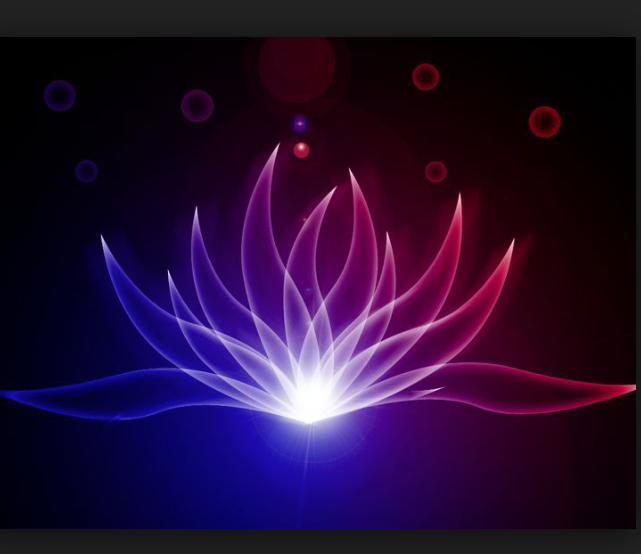
What is a Wounded Healer?
A Wounded Healer is someone volunteering or working in the healing profession who is helping others but bleeding from their own wounds while they help.
According to Carl Jung the psychiatrist; a wounded healer must go through their wound. He explains that To go through our wound is to embrace and say “yes” to the mysteriously painful new place in ourselves where the wound is leading us. Going through our wound, we can allow ourselves to be re-created by the wound. Our wound is not a static entity, but rather a continually unfolding dynamic process that manifests, reveals and incarnates itself through us, which is to say that our wound is teaching us something about ourselves. Going through our wound means realizing we will never again be the same when we get to the other side of this initiatory process. Going through our wound is a genuine death experience, as our old self “dies” in the process, while a new, more expansive and empowered part of ourselves is potentially born (Wikipedia).
http://en.wikipedia.org/wiki/Wounded_healer
Wounded Healer; The Series/ Part 5
The Alexander Technique
In this part of the Wounded Healer, we explore the Alexander Technique as it applies to PTSD, anxiety, and stress
What is the Alexander Technique?
“The Alexander technique is a way of learning how you can get rid of harmful tension in your body.” Although not a full definition of the Alexander Technique, this is a good start.*
“The Alexander Technique is a way of learning to move mindfully through life. The Alexander process shines a light on inefficient habits of movement and patterns of accumulated tension, which interferes with our innate ability to move easily and according to how we are designed. It’s a simple yet powerful approach that offers the opportunity to take charge of one’s own learning and healing process because it’s not a series of passive treatments but an active exploration that changes the way one thinks and responds in activity. It produces a skill set that can be applied in every situation. Lessons leave one feeling lighter, freer, and more grounded.”
“The Alexander Technique is a method that works to change (movement) habits in our everyday activities. It is a simple and practical method for improving ease and freedom of movement, balance, support and coordination. The technique teaches the use of the appropriate amount of effort for a particular activity, giving you more energy for all your activities. It is not a series of treatments or exercises, but rather a reeducation of the mind and body. The Alexander Technique is a method which helps a person discover a new balance in the body by releasing unnecessary tension. It can be applied to sitting, lying down, standing, walking, lifting, and other daily activities…”
“The Alexander Technique is an intelligent way to solve body problems.”
– So begins an excellent article and introduction to the Technique.
To read more please visit this informative site, link below
http://www.alexandertechnique.com/at.htm
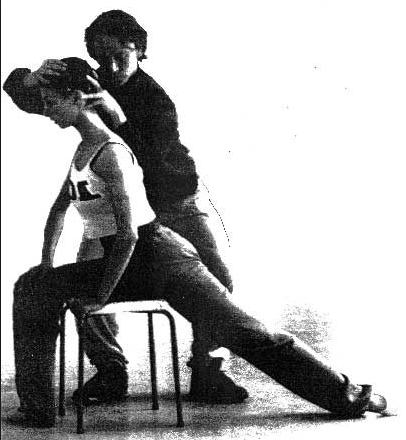
Alexander Technique online resources
Alexander On-Line
A Guide to Interactive Alexander Technique Resources on the Web
Alexander Technique Blogs and Social Media
Alexander Technique Blogs is a compilation of the very best of AT blogs from around the world, many of which are interactive.
In recent years, a number of Alexander Technique teachers and students have become active on Facebook and Twitter. You can search either Facebook or Twitter for “Alexander Technique” to see what’s available.
Here are a few suggestions:
The Complete Guide to the Alexander Technique Page on Facebook provides up-to-date information about the latest Alexander Technique developments from around the world.
Alexander Technique Global is a Facebook group for Alexander Technique teachers, students, and enthusiasts from all backgrounds.
Alexander Technique Worldwide is a Facebook group for Alexander Technique teachers and is not a public group..
Alexander Technique Blogs is a Facebook group that is a good place to see recent blog posts.
I like lying down in semi-supine is a Facebook group that lists information about and examples of Alexander Technique constructive rest.
http://www.alexandertechnique.com/at.htm
What is PTSD?
“Post-traumatic stress disorder (PTSD) is a mental health condition that’s triggered by a terrifying event — either experiencing it or witnessing it. Symptoms may include flashbacks, nightmares and severe anxiety, as well as uncontrollable thoughts about the event.
Most people who go through traumatic events may have temporary difficulty adjusting and coping, but with time and good self-care, they usually get better. If the symptoms get worse, last for months or even years, and interfere with your day-to-day functioning, you may have PTSD.
Getting effective treatment after PTSD symptoms develop can be critical to reduce symptoms and improve function.”
http://www.mayoclinic.org/diseases-conditions/post-traumatic-stress-disorder/home/ovc-20308548
What is anxiety?
Experiencing occasional anxiety is a normal part of life. However, people with anxiety disorders frequently have intense, excessive and persistent worry and fear about everyday situations. Often, anxiety disorders involve repeated episodes of sudden feelings of intense anxiety and fear or terror that reach a peak within minutes (panic attacks).
These feelings of anxiety and panic interfere with daily activities, are difficult to control, are out of proportion to the actual danger and can last a long time. You may avoid places or situations to prevent these feelings. Symptoms may start during childhood or the teen years and continue into adulthood.
Examples of anxiety disorders include generalized anxiety disorder, social anxiety disorder (social phobia), specific phobias and separation anxiety disorder. You can have more than one anxiety disorder. Sometimes anxiety results from a medical condition that needs treatment.
Whatever form of anxiety you have, treatment can help.

To learn about how the Alexander Technique can help with PTSD and anxiety. Listen to the Podcast below-
Becca Ferguson, an Alexander Technique teacher in Urbana and Chicago, Illinois talks with Robert Rickover about the role the Alexander Technique in helping people with PTSD release the physical tensions that are a part of this condition. Becca’s website: mindfulat.com Robert’s website: alexandertechniquenebraska.com More information about the Alexander Technique: alexandertechnique.comhttp://bodylearning.buzzsprout.com/382/50982-how-the-alexander-technique-can-help-people-with-post-traumatic-stress-disease-ptsd
alexandertechnique.comhttp://bodylearning.buzzsprout.com/382/50982
Posttraumatic Stress Disorder / http://traumadissociation.com/ptsd
What is Posttraumatic Stress Disorder? Posttraumatic Stress Disorder (PTSD) is a very common mental health disorder, affecting 8.7% of people during their lifetime. The core symptoms are: re-experiencing the trauma psychologically (flashbacks and nightmares) avoiding reminders of the trauma emotional numbing hyperarousal (irritability, and being jumpy or constantly “on alter”) Who gets PTSD? PTSD is also known as posttraumatic stress syndrome (PTSS) and is not caused by normal, everyday stress. PTSD can occur at any age, it can occur during childhood, adolescence, adulthood and old age.
Posttraumatic stress disorder affects around 5% of men and 10% of women at some point during their life. Up to one in three people who experience a traumatic event develop PTSD as a result. — National Health Service, UK
PTSD causes different people to react in very different ways, and it can be very disabling. “The disturbance, regardless of its trigger, causes clinically significant distress or impairment in the individual’s social interactions, capacity to work or other important areas of functioning.”
Recovery from PTSD Recovery rates vary: the DSM-5 states around 50% of adults with PTSD may recover within 3 months but some people have PTSD for over a year. In some cases, PTSD has continued for over 50 years, for example in Vietnam war veterans and Holocaust survivors. Santiago et al. (2013) reviewed many studies of PTSD, finding that 50% recovered within 2 years.
As the graph shows, a third of people exposed to trauma develop PTSD (33%), and recovery is significantly quicker in people exposed to unintentional trauma, for example natural disasters, life-threatening illness or accidents.
Factors know to hinder recover, or worsen symptoms after trauma include: reminders of the original trauma normal ‘life stressors’, for example unemployment, illness or bereavement new traumatic experiences worsening physical declining health or cognitive function (in older people) social isolation can exacerbate symptoms
What causes PTSD?
Causes of PTSD: 10 common causes
Only a small percentage of people with PTSD are traumatized by combat. source: Spence et al. (2011).
Being female doubles the risk of a person developing PTSD; the reasons for this are not yet understood.
The type of trauma experienced strongly affects the risk of developing PTSD; many studies show that rape causes the highest rates of PTSD, with over 50% of rape survivors affected.
Read more: http://traumadissociation.com/ptsd
10 Tips for Understanding Someone with PTSD/ Prevention and Wellness
http://preventionandwellness.net/10-tips-for-understanding-someone-with-ptsd/
PTSD makes communication difficult. Many survivors can’t find the words to express what they’re feeling. Even when they do, it’s very normal for them not to be comfortable sharing their experience. Elements of shame, fear, anger, guilt and grief often get in the way of a calm, focused discussion.
Friends and family (and anyone else who is not the source of the PTSD but is standing by while someone attempts to heal) need something that translates PTSD language. Armed with knowledge, insight and awareness you’ll have an easier time knowing how to react, respond and relate to your PTSD loved one during the healing process. The more you appreciate things from the PTSD perspective the more helpful and supportive you can be. Now is the time for empathy, compassion and patience.
he list below will give you an overview of things to understand. For more in-depth information – plus content specifically geared for you, the caregiver – check out the free archives of our radio show, CHANGING DIRECTION, which features professionals and experts weighing in on what you need to know about PTSD and your role.
#1 – Knowledge is power. Understanding the process of a triggering event, the psychic reaction to trauma, the warning signs and symptoms of PTSD, and available treatment options for PTSD allows you to help recognize, support and guide your PTSD loved one toward diagnosis, treatment and healing.
We need you to be clearheaded, pulled together and informed.
#2 – Trauma changes us. After trauma we want to believe —as do you—that life can return to the way it was; that we can continue as who we were. This is not how it works. Trauma leaves a huge and indelible impact on the soul. It is not possible to endure trauma and not experience a psychic shift.
Expect us to be changed. Accept our need to evolve. Support us on this journey.
#3 – PTSD hijacks our identity. One of the largest problems with PTSD is that it takes over our entire view of ourselves. We no longer see clearly. We no longer see the world as we experienced it before trauma. Now every moment is dangerous, unpredictable and threatening.
Gently remind us and offer opportunities to engage in an identity outside of trauma and PTSD.
#4 – We are no longer grounded in our true selves. In light of trauma our real selves retreat and a coping self emerges to keep us safe.
Believe in us; our true selves still exist, even if they are momentarily buried.
#5 – We cannot help how we behave. Since we are operating on a sort of autopilot we are not always in control. PTSD is an exaggerated state of survival mode. We experience emotions that frighten and overwhelm us. We act out accordingly in defense of those feelings we cannot control.
Be patient with us; we often cannot stop the anger, tears or other disruptive behaviors that are so difficult for you to endure.
#6 – We cannot be logical. Since our perspective is driven by fear we don’t always think straight, nor do we always accept the advice of those who do.
Keep reaching out, even when your words don’t seem to reach us. You never know when we will think of something you said and it will comfort, guide, soothe or inspire us.
#7 – We cannot just ‘get over it’. From the outside it’s easy to imagine a certain amount of time passes and memories fade and trauma gets relegated to the history of a life. Unfortunately, with PTSD nothing fades. Our bodies will not let us forget. Because of surging chemicals that reinforce every memory, we cannot walk away from the past anymore than you can walk away from us.
Honor our struggle to make peace with events. Do not rush us. Trying to speed our recovery will only make us cling to it more.
#8 – We’re not in denial—we’re coping! It takes a tremendous effort to live with PTSD. Even if we don’t admit it, we know there’s something wrong. When you approach us and we deny there’s a problem that’s really code for, “I’m doing the best I can.” Taking the actions you suggest would require too much energy, dividing focus from what is holding us together. Sometimes, simply getting up and continuing our daily routine is the biggest step toward recovery we make.
Alleviate our stress by giving us a safe space in which we can find support.
#9 – We do not hate you. Contrary to the ways we might behave when you intervene, somewhere inside we do know that you are not the source of the problem. Unfortunately, in the moment we may use your face as PTSD’s image. Since we cannot directly address our PTSD issues sometimes it’s easier to address you.
Continue to approach us. We need you to!
#10 – Your presence matters. PTSD creates a great sense of isolation. In our post-traumatic state, it makes a difference to know that there are people who will stand by us. It matters that although we lash out, don’t respond and are not ourselves, you are still there, no matter what.
Don’t give up, we’re doing our best.
Source:http://healmyptsd.com/education/ptsd-caregivers-support/10-tips
Common Responses After Losing a Child (for Protective Moms)/ E. J Perth PMA INTL. USA Regional Director, Healing & Prayer Network Administrator
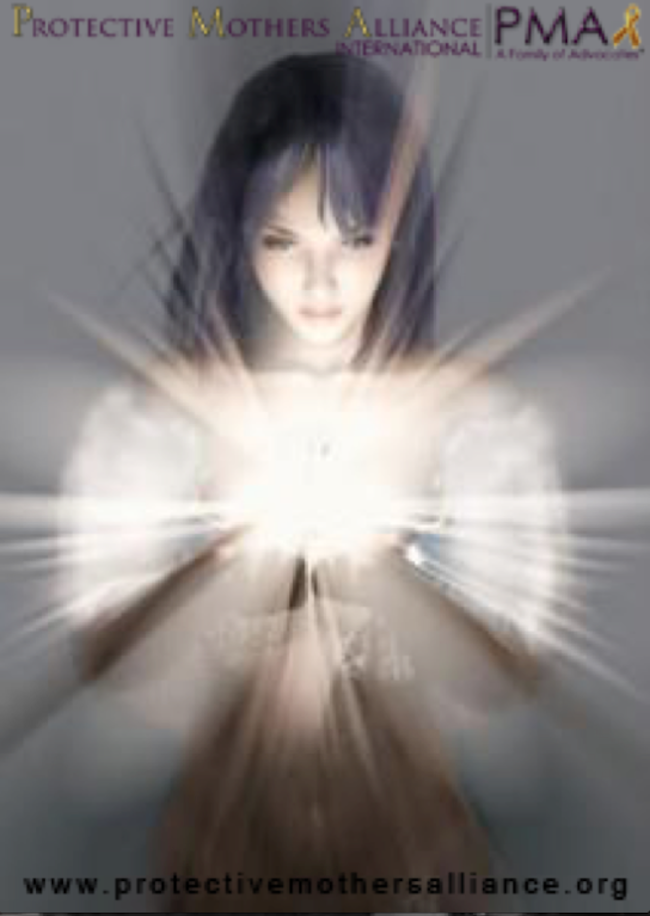
A list of common responses/reactions after losing a child in a family court proceeding
I feel it is important to distinguish the loss and being related to family court proceedings because often times the process involves factors that re-traumatize the family and prolong any possibility of stabilizing the family. In essence, there is a distinct type of grief that follows losing a child due to unjust proceedings that villify a parent trying to protect their children.
Mothers who loose their children in family court proceedings often experience (and report):
* Character assassination and/or emotional abuse of the mother (who may be labelled as having “Parental Alienation Syndrome” or “Malicious Mom Syndrome”)
* Minimizing past abuse and its affects/Minimizing the current danger
* Legal proceedings that deny a mother of her legal rights
* Feeling threatened or coerced by court personnel
*Expensive legal or court costs, often resulting in severe financial hardship (I have heard of mothers losing their home and being forced to work several jobs, in which their contact with their children becomes even more limited)
* Re-traumatization
* Inability to protect children combined with valid concerns the children may still be in danger
* Children forcibly removed from the home (a majority of these mothers were primary caregivers)
* Mothers denied contact with children–these children are oftn abruptly, and without warning removed from their homes, their community, their friends and any connection to the mother
* Mothers being compelled into supervised visitation to see children, and may be exposed to other abusers (I have actually heard of a woman who took the bus to supervised visitation, and was stalked by an alleged abuser when leaving the premisis)
* Inability to get help or support for herself. Mothers may have their medical and psychological records subpoened by the court and/or their abuser, in which she degraded or labelled based on the findings and then forced to “prove” she is a fit mother. Mothers may also become isolated because they feel others do not understand their situation. It is common for people to feel overwhelmed hearing these stories and then to be unable to provide support. The financial depletion caused by family court may also limit a woman’s ability to seek help. Not to mention the woman may be so overwhelmed that she does not have the energy to get the help she may need.
* DV by Proxy ; the abuser manipulating the children, or using them in ways to hurt, intimidate or harass the mother (Ie using children to send messages to the mother, telling the children false information about the mother, threatening to harm the children, threatening to take the children, etc..)
Mothers who loose their children in this way often experience:
* Physical Illness (including but not limited to headaches, ulcers, vomiting, fatigue and exhaustion)
* Anxiety/Panic Attacks
* Depression
* Guilt/Shame/ Self-Blame, particularly around issues that they failed or could not protect their children
* Flashbacks (The court proceedings may trigger memories of abuse, or legitimate fears)
* Binge Eating and/or Lack of Appetite, Nausea
* Insomnia
* Shock (A combination of all these factors, feeling numb, unable to perform daily tasks, feeling as if she is living in a fog, lack of memory/concentration, tremors/trembling, hot flashes etc)
* A surge of emotion/adrenaline
* Hyperventilating
* Post Traumatic Stress
* Avoidance (Especially around areas that remind them of their children. It would be common to even avoid social places and friends)
* Withdrawl
* Anger
* Fear
* Fits of Crying — There are often triggers. (When I lost my child, I remember avoiding the grocery store because I would pass my child’s favorite treats, think of my child, and start to cry. It got to the point where I could not even remember what I wanted in the grocery store because I was so upset.)
* Memory Loss/Concentration Difficulties
THIS DOES NOT MEAN THE MOTHER IS MENTALLY ILL OR UNSTABLE, these are typical responses to the loss of a child in combination with the extreme stress of being involved in family court proceedings that are perceived as unjust, and which a mother has no control over. It takes time to work through the grief and emotions of losing your child, and being involved in family court proceedings–these response may emerge and change as the mother processes what has happened.
I found it helpful to be part of a domestic violence group, hosted by a battered women’s shelter. The group is confidential and does not keep records. I was able to talk with other women and learn tools on how to cope, and rebuild my life. There is hope–Stay strong.
Blessings ~ EJ Perth, PMA Intl.USA Regional Director, Healing & Prayer Network Administrator
If you have anything to add to this list, please add a comment. Please keep remain respectful. Any derogatory language will be deleted. Remember PMA is a NO ABUSE ZONE! Thank you for keep it friendly 🙂
Wounded Healer; The Series / Part 3 Alternative Healing Modalities.
In this part of our Wounded Healer series we will begin to explore the various alternative healing modalities. Some of these healing modalities have not been scientifically proven, yet some people have found them helpful. As with all alternative therapies, please use discretion and common sense. Seek the advice of a qualified professional if any questions arise. Always only do what makes you feel comfortable. We will start our exploration of alternative healing modalities with Color therapy or Chromatherapy.
<
What is Color Therapy or Chromatherapy?
Chromotherapy, sometimes called color therapy, colorology or cromatherapy, is a complementary medicine method.
Color is just light at different wavelengths or frequencies that we see or feel, and use through our senses.
Each color has special properties, from wavelength or frequencies, that can be used in color therapy–those properties affect our senses, and our own physical/mental energy.
Color therapy is using colors to heal. Trained chromotherapists claim to be able to use light in the form of color to balance “energy” wherever a person’s body be lacking, whether it be on physical, emotional, spiritual, or mental levels. The practice is pseudoscientific, since it does not employ the scientific method.
Color therapy is distinct from other types of light therapy, such as ultraviolet blood irradiation, which are scientifically-accepted medical treatments for a number of conditions, and from photobiology, the scientific study of the effects of light on living organisms.
American Civil War General Augustus Pleasonton (1801-1894) conducted his own experiments and in 1876 published his book The Influence Of The Blue Ray Of The Sunlight And Of The Blue Color Of The Sky about how the color blue can improve the growth of crops and livestock and can help heal diseases in humans. This led to modern chromotherapy, influencing scientist Dr. Seth Pancoast and Edwin Dwight Babbitt to conduct experiments and to publish, respectively, Blue and Red Light; or, Light and Its Rays as Medicine (1877) and The Principles of Light and Color.
In 1933, Hindu scientist Dinshah P. Ghadiali[importance?] published “The Spectro Chromemetry Encyclopaedia”, a work on color therapy. Ghadiali claimed to have discovered the scientific principles which explain why and how the different colored rays have various therapeutic effects on organisms. He believed that colors represent chemical potencies in higher octaves of vibration, and for each organism and system of the body there is a particular color that stimulates and another that inhibits the work of that organ or system. Ghadiali also thought that by knowing the action of the different colors upon the different organs and systems of the body, one can apply the correct color that will tend to balance the action of any organ or system that has become abnormal in its functioning or condition. ( Wikipedia).
Throughout the 19th century “color healers” claimed colored glass filters could treat many diseases including constipation and meningitis.
A New Age conceptualisation of the chakras of Indian body culture and their positions in the human body
Practitioners of ayurvedic medicine believe the body has seven “chakras,” which some claim are ‘spiritual centers’, and which are held to be located along the spine. New Age thought associates each of the chakras with a single color of the visible light spectrum, along with a function and organ or bodily system. According to this view, the chakras can become imbalanced and result in physical diseases, but application of the appropriate color can allegedly correct such imbalances. The purported colors and their associations are described as:
Color Chakra Chakra location Alleged function Associated system
Red First Base of the spine Grounding and Survival Gonads, kidneys, spine, sense of smell[citation needed]
Orange</strong Second Lower abdomen, genitals Emotions, sexuality Urinary tract, circulation, reproduction[citation needed]
Yellow Third Solar plexus Power, ego Stomach, liver, gall bladder, pancreas[citation needed]
Green Fourth Heart Love, sense of responsibility Heart, lungs, thymus[citation needed]
Blue Fifth Throat Physical and spiritual communication Throat, ears, mouth, hands[citation needed]
Indigo Sixth Just above the center of the brow, middle of forehead Forgiveness, compassion, understanding Eye, pineal glands[citation needed]
Violet Seventh Crown of the head Connection with universal energies, transmission of ideas and information Pituitary gland, the central nervous system and the cerebral cortex ( Wikipedia).
Color is one of the languages of the soul, just look at inspired or meditative paintings.
They influence our mood and emotions.
They have their impact on our sense of well-being or un-easiness.
Using and avoiding certain colors is a way of self-expression; it sheds light on our personality.
Colors affect our way of perception (light colors make a space look big, a high ceiling looks less high when painted in a dark color, etc.)
Colors have a symbolic meaning which is immediately recognized by our subconsciousness. It must be said that not all colors mean the same to all persons and all cultures.
They influence the flow and amount of energy in our bodies.
Colors tell something about biological attraction.
Keeping this in mind, let us look at how color can help the tired or diseased body and mind. Color healing, known as Chromotherapy, can be implemented in a number of ways. The ancients built great halls of color healing, where individuals entered and were bathed in light that was filtered through various colored glass panels or windows.
Red
Red is thought to be linked to the base chakra and the spine, hips and legs. It’s thought to stimulate and boost physical energy, strengthen willpower, increase circulation, clear congestion and is linked with sexuality.
Orange
Orange is thought to encourage joy, socializing and optimism, which is why it’s considered useful for depression or sadness. Orange is associated with the sacral chakra and it’s believed to benefit the kidneys, urinary tract and the reproductive organs.YellowYellow is associated with the solar plexus chakra. An imbalance in the solar plexus chakra is thought to promote fear, apprehension, confusion, lack of determination, introversion or power issues, which this color is believed to balance.
Yellow
Yellow is associated with the intellect and mental processes and is uplifting. The solar plexus chakra is also thought to influence the digestive system.
Green
Green is a colour that’s thought to encourage emotional stability, purity and calmness. It’s related to the heart chakra, so it’s believed to help with emotional issues, such as love, forgiveness, trust and compassion. An imbalance in the heart chakra is associated with fear of relationships, mistrust, jealousy, isolation and insecurity.BlueBlue is related to the throat chakra and is said to be connected to the throat and lungs. It’s thought to enhance verbal expression and communication, artistic expression and willpower. It’s a calming color and is believed to help insomnia, anxiety, throat problems, high blood pressure, migraine and skin irritation.
Indigo
Indigo is associated with the third eye chakra, located between the eyes, and is related to the eyes and the lower part of the head. It’s said to encourage greater intuition and strengthen the lymph system, immune system and help purify and cleanse the body.Purple or VioletPurple, or violet, is associated with the crown chakra, which is at the top of the head. It’s thought to encourage spirituality, intuition, wisdom, mastery and mental strength and focus.
To learn more about colors and how color can play a role in healing see the link below and play some fun color games.
Fear Boosts Activation of Immature Brain Cells: Adult Neural Stem Cells Play Role in Creating Emotional Context of Memory/ Science News
Fear burns memories into our brain, and new research by University of California, Berkeley, neuroscientists explains how.
In a fearful situation, these newborn neurons get activated by the amygdala and may provide a “blank slate” to strongly imprint the new fearful memory, she said. In evolutionary terms, it means new neurons are likely helping you to remember the lion that nearly killed you.
“We remember emotional events much more strongly than daily experiences, and for a long time we have known that connections between the amygdala and hippocampus help to encode this emotional information,” said Kaufer, an assistant professor of integrative biology and a member of UC Berkeley’s Wills Neuroscience Institute. “Our research shows that amygdala input actually pushes the hippocampus to make new neurons from a unique population of neural stem cells. This provides completely new cells that get activated in response to emotional input.”
The finding has implications for post traumatic stress disorder (PTSD) and other problems caused by faulty regulation of emotional memory.
“Many affective disorders involve disordered emotional memories like PTSD, depression and anxiety. We think that newborn neurons may play a role in creating these emotional memories,” she said.
The finding comes a year after brain researcher Fred Gage at the Salk Institute for Biological Studies in La Jolla, Calif., showed that the formation of new memories is associated with increased activation of two-week-old newborn nerve cells in the hippocampus that are derived from adult neural stem cells. Adult stem cells appear to differentiate continually into new nerve cells — nearly 100 each day — yet half of those newborn neurons are slated for death within four weeks after their birth. If they are highly activated, however — such as in learning new complex information — many more of them will survive and presumably help in establishing new memories in the brain.
Kaufer, who conducts research on the effects of stress on the brain, knew that many types of positive and negative experiences, such as exercise and stress, affect the rate of neurogenesis in the hippocampus. Along with graduate students Elizabeth Kirby, the lead author of the study, and Aaron Friedman, she was intrigued by the idea that emotions might affect neurogenesis in the hippocampus, since the brain’s clearinghouse for emotions, the amygdala, is connected to the hippocampus via multiple neural circuits. To test this, Kirby focused on the basolateral amygdala, the region of the almond-shaped structure that handles negative emotions, including stress, anxiety and fear.
Using rats, Kirby surgically destroyed the basolateral amygdala and discovered that the production of new nerve cells in the hippocampus decreased. To make sure that the cell damage created when the amygdala was surgically destroyed was not affecting the experiment, the researchers borrowed a gene therapy technique from Robert Sapolsky’s lab at Stanford University to genetically introduce potassium channels into the amygdala, which shut down the activity of the nerve cells without causing injury. This also decreased neurogenesis in the hippocampus.
They next tested Gage’s theory that new neurons are especially sensitive to input two weeks after they form. Kirby and Kaufer labeled hippocampal cells created over a three-day period in a group of rats, and then conditioned a fear response in these rats two weeks later. They then confronted the rats with the same fearful situation or a neutral yet novel context the next day. When they examined the brains, they found that the newborn neurons had been specifically activated by the fearful situation. However, when they destroyed the basolateral amygdala, new neurons were no longer activated in response to the fearful memory.
“The research suggests that newborn neurons play a role not only in the formation of memory, but also in helping to create the emotional context of memory,” Kirby said. It also suggests that the basolateral amygdala drives the ability of new neurons to be part of an emotional memory.
The team now plans to see whether other negative stimuli, such as stress and anxiety, similarly cooperate with amygdala activity to alter neurogenesis in the hippocampus.
The coauthors of the paper with Kaufer, Kirby and Friedman are UC Berkeley graduate student David Covarrubias and undergraduates Carl Ying and Wayne G. Sun; Ki Ann Goosens, an assistant professor of brain and cognitive sciences in the McGovern Institute for Brain Research at the Massachusetts Institute of Technology; and Stanford’s Sapolsky.
Kaufer’s work is funded by a 2010 BRAINS (Biobehavioral Research Awards for Innovative New Scientists) award from the National Institute of Mental Health of the National Institutes of Health and a young investigator award from The Brain and Behavior Research Foundation, formerly the National Alliance for Research on Schizophrenia and Depression (NARSAD). Kirby is supported by a California Institute for Regenerative Medicine pre-doctoral fellowship and a National Defense Science and Engineering Graduate Research fellowship from the U. S. Department of Defense.
